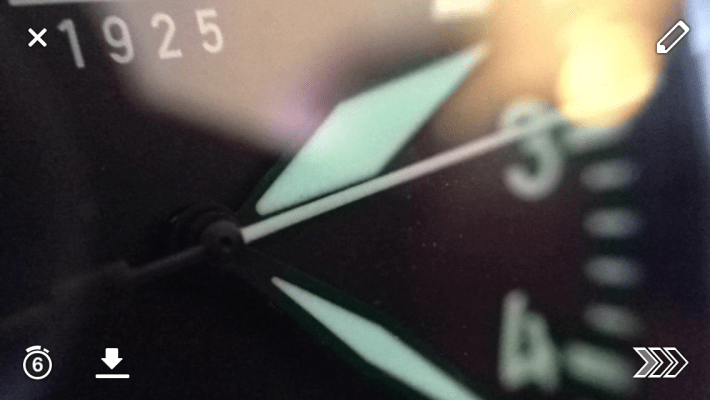Traditionally photography is about preserving a moment in time; you take a picture literally because it’ll last longer. The entire art is built around a quest for permanence, and archival desires. But with Snapchat, you’re casting off those things you photograph almost as soon as you take the picture – in many cases it’s less permanent than just continuing to look at something. For an avid hobbyist photographer, it’s somewhat counterintuitive, but also very liberating.
Part of the appeal of Snapchat seems to be that people don’t have to be too concerned about how they take a photo; the communication is more important here, and since no one’s framing any of your pictures, there’s no reason to sweat composition, lighting or anything else. But I do find myself thinking about those things, resulting in an entirely different kind of art compared to traditional, camera-based photography.
Taking photos for Snapchat is, in many ways, much more about audience than traditional photography is. You’re creating a moment for another person specifically in most cases, and you’ve got constraints including your immediate environs, a limited smartphone camera and a camera interface that’s simple to the point of being like a blunt instrument, even compared to the stock iPhone camera app. Best of all, you’re creating for momentary consumption; the photo has to convey what you need it to in a very brief window of time.
But the best part is the absence of pretense around taking these photos. The snaps aren’t trying to be something they’re not; they’re pictures, and all the fun and the art is uncomplicated by questions of legacy, or of long-lasting quality and memorability. You’re making something without having to worry about how making that thing will potentially cast you in the eyes of history. Not that most people are consciously thinking about what kind of museums their work will appear in later, or how it will be judged by future generations, but the act of capturing, writing down or recording something is deeply entangled with those concerns, conscious or not.
Being free of that allows for more genuine enjoyment – Kurt Vonnegut Jr. comes close to describing how that feels in his novel Galapagos when he talks about the narrator writing the book you’re reading with this finger, in the air: In other words, taking a very long view reveals that both Snapchat and traditional photographic tools are equally ephemeral, as both are of no consequence on a cosmic scale. But having that temporariness brought home and made understandable makes all the difference.
We’re strongly conditioned to believe that if you’re going to make something, it’s worth making something that will last. But Snapchat is a good reminder that sometimes, it’s just fine to make something fleeting, too.
